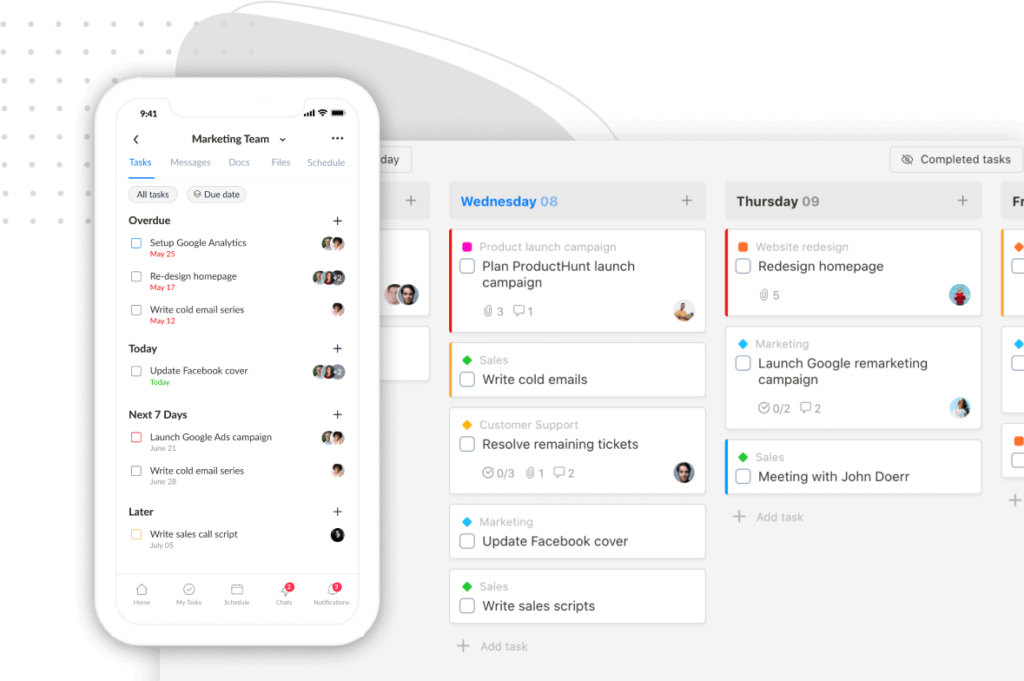Ever spent a whole day crossing tasks off your to-do list, only to realize you haven’t accomplished anything truly important?
Did you know that our brains often trick us, giving us a false sense of productivity? Our brains often trick us into prioritizing the easiest tasks for a quick dopamine hit, leaving high-impact projects untouched.
But there’s a solution to this false sense of productivity: the ABCDE Method.
This straightforward technique can help you organize your tasks, set clear priorities, and reduce stress, ensuring that your efforts are focused on what really matters.
In this article, we’ll explain how the ABCDE method works and how you can use it to take control of your to-do list and achieve your goals more effectively. Let’s get started!
I. Overview
1. What is the ABCDE Method?
Simply put, the ABCDE method is a task prioritization technique where you categorize tasks into five groups (A, B, C, D, E) based on their importance and urgency.
With each group, you take specific action for effective task management.
Some essential information about the method includes:
|
Invented by |
Brian Tracy (Motivational speaker and author) |
|---|---|
|
Ease of Use Level |
Very Easy |
2. How the ABCDE Method helps you
Using the ABCDE method offers several benefits:
- Prioritizing tasks more accurately determined, which improves your decision-making process
- Keeping your priorities straight
- Overcoming procrastination
- Gaining a great sense of accomplishment, leading to higher self-esteem and pride
II. The ABCDE Method Explained
1. Understanding “Urgency” and “Importance”
As mentioned, the ABCDE method prioritizes tasks based on two elements: “urgency” and “importance.” It’s crucial to have an accurate understanding of these terms before diving deeper.
- Urgency is about the time pressure of a task. Does it have a strict deadline or immediate consequence for not being done?
- Importance is about how crucial the task is for your goals. Does it have a significant impact on your overall success?
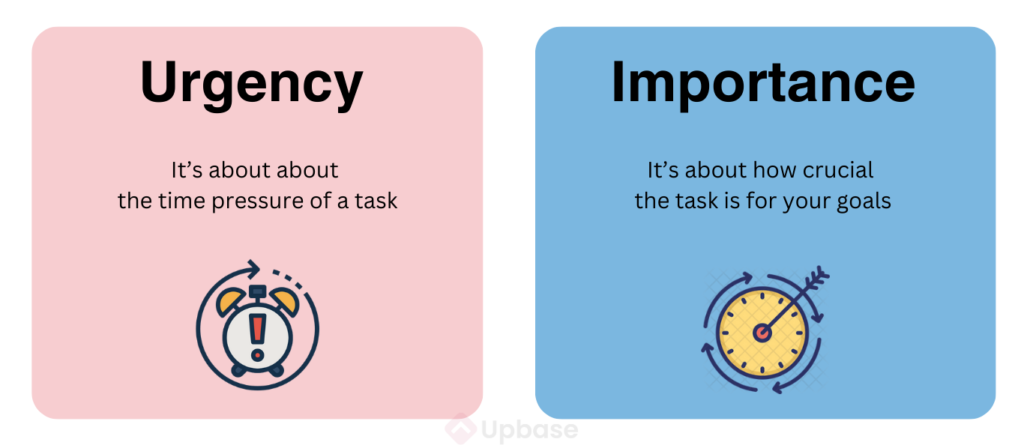
2. Understanding A, B, C, D, and E characters | How does the ABCDE Method work?
Now, let’s dive into what the A, B, C, D, and E characters mean and how the ABCDE prioritization method works.
A – Very Important
“A” tasks are your most important tasks with pressing deadlines. These tasks require immediate attention and if not done, it will lead to serious consequences.
For example, an “A” task would be meeting with a client to finalize a crucial contract today or payments with expiration dates.
B – Important
B tasks are important tasks but don’t have immediate deadlines. Completing them contributes to your goals but missing them isn’t as catastrophic as missing A tasks (though it can still have negative impacts).
A “B” task would be finishing a crucial report for an upcoming board meeting next week.
C – Nice to Do
C tasks are not as important tasks as A or B tasks but still offer some benefits.
They might improve your work or well-being in some way. They even be mood-boosters or contribute to a more organized work environment.
But delaying or eliminating them would only cause minor consequences or even none. Think of them as “icing on the cake.”
A “C” task would be completing some personal business during work hours.
D – Delegate
D tasks can vary slightly in importance but generally fall somewhere between C and E. They might be somewhat important for the overall workflow but don’t require your specific expertise.
Therefore, you can assign tasks to someone who can effectively tackle them to gain free time for higher task priorities.
A “D” task would be researching potential vendors for the upcoming marketing campaign.
E – Eliminate
These are tasks that are neither important nor urgent. They offer minimal to no benefits and can be completely eliminated from your to-do list without any negative consequences.
An “E” task would be taking twice-a-week trips to the café.
Here’s a breakdown of the ABCDE method:
|
Category |
Urgency |
Importance |
|---|---|---|
|
A |
High |
High |
|
B |
Low |
High |
|
C |
Low |
Low |
|
D |
Any |
Low (fall somewhere between C and E) |
|
E |
Lowest |
Lowest |
3. How to use the ABCDE Method
Implementing the ABCDE method is easy if you follow these steps:
Create your task list – Write down all the tasks and responsibilities in one place.
Assign ABCDE – Prioritize each task by labeling them A, B, C, D, or E based on how urgent and important they are.
Begin work – The order is to focus on your A-priority tasks first. After finishing all the A’s, move on to the B tasks, then the C tasks if you have time. Delegate D tasks to someone who has the expertise to tackle them (remember to do that early so they have time to complete the assigned tasks). Get rid of E tasks completely.
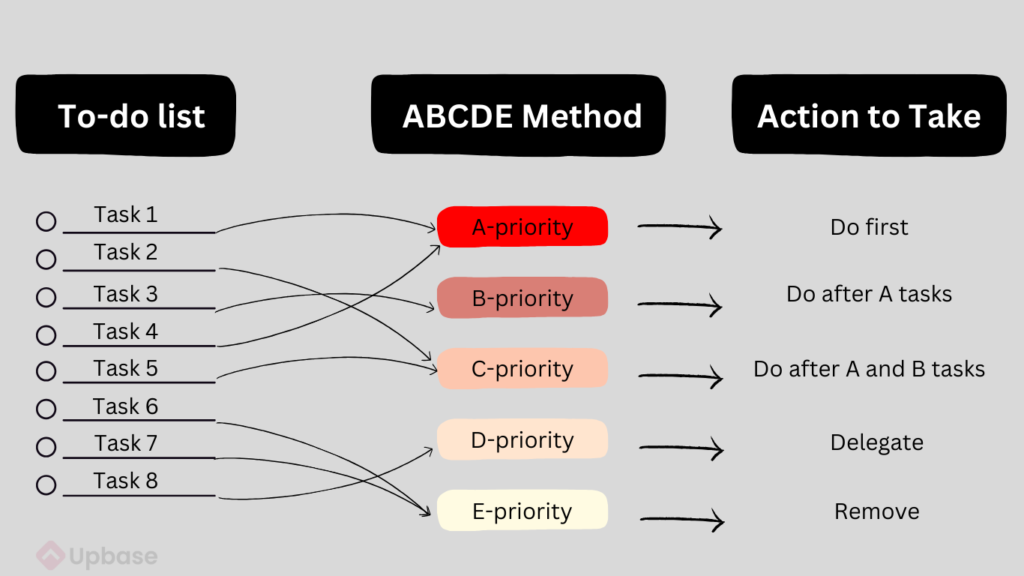
Review regularly – Check your task list often and adjust priorities as needed. A new task might come up, and deadlines can change.
What if you have many tasks in the same category (like many A’s)? Well, you can try one of these strategies:
- Pick the single most important task and complete it first (it’s called the “A-1” approach).
- Assign estimated time to each task within a category., then focus on the longest time-consuming one.
- For equally important tasks (A vs. A), prioritize those with the tightest deadlines.
4. Common mistakes and solutions in applying the ABCDE Method
The ABCDE Method is like a trusty toolbox, but sometimes we accidentally knock a few screws loose. Here are common mistakes to avoid:
If you prioritize tasks too subjectively
If you’re an overly subjective person, setting priorities (A, B, C, D, E) can be a real challenge. You might underestimate the importance of a task or overestimate its urgency.
An effective solution is to think about the potential negative impact of not completing a task.
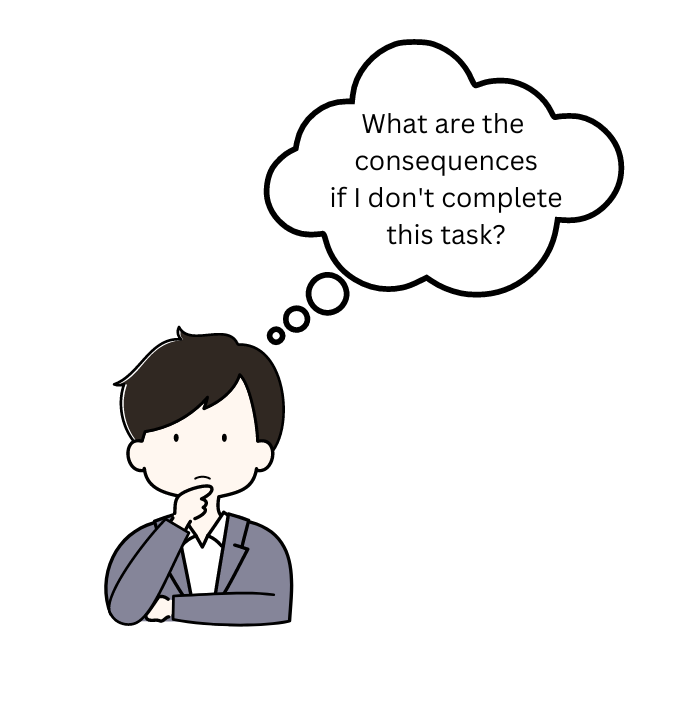
The more severe the consequences, the higher the priority (A or B).
Or, you can discuss the task’s importance with someone who thinks logically.
If you fear delegating tasks
Some people feel hesitant to delegate tasks because they fear losing control or worry that the other person won’t complete the task to the expected quality.
The fact is that no one can excel at everything. Everyone has their own expertise, meaning they can do certain tasks better than you.
Your duty is to match the right tasks to the right members of your team.

Don’t forget to give them clear instructions and deadlines when delegating tasks.
Read more: How to assign tasks to others effectively
If you don’t eliminate enough tasks
We tend to keep tasks on our list “just in case.” However, this only clutters our to-do lists and makes it harder to focus on important tasks.
Be ruthless and evaluate each task honestly! If it provides little value, eliminate it.
Additionally, if there are multiple small, similar tasks (e.g., emails), schedule a dedicated time to handle them all at once (e.g., “Check emails – 30 minutes”).
5. Extra tips for the best use of the ABCDE method
Use technology
It’s more convenient to apply the ABCDE method using an app rather than on paper.
For example, after setting priorities for tasks, you might want to edit your list with the A tasks being on top. Most apps, such as Upbase, allow you to do this by simply dragging and dropping tasks into the desired position.
However, on paper, you have to erase the list, which can make it look messy, or you might need to start a whole new list. Either way, it’s time-consuming.
Additionally, using paper requires everyone to be in the same place, while apps do not. This is especially useful for remote teams.
Another notable advantage of using apps to implement the ABCDE method is the ability to filter tasks by their importance, urgency, or assignments, which the traditional approach cannot offer.
Combine the ABCDE method with other time management techniques for increased productivity
Here are some techniques that work well with the ABCDE method:
Timeboxing:
What it is: Allocating specific time slots for specific tasks.
Benefits: Helps you stay focused and avoid getting overwhelmed.
How it works with the ABCDE method: After categorizing tasks with ABCDE, use timeboxing to allocate dedicated time slots for completing your A and B tasks.
The Pomodoro Technique:
What it is: A popular time management technique that breaks your day into 25-minute focused intervals with short breaks in between.
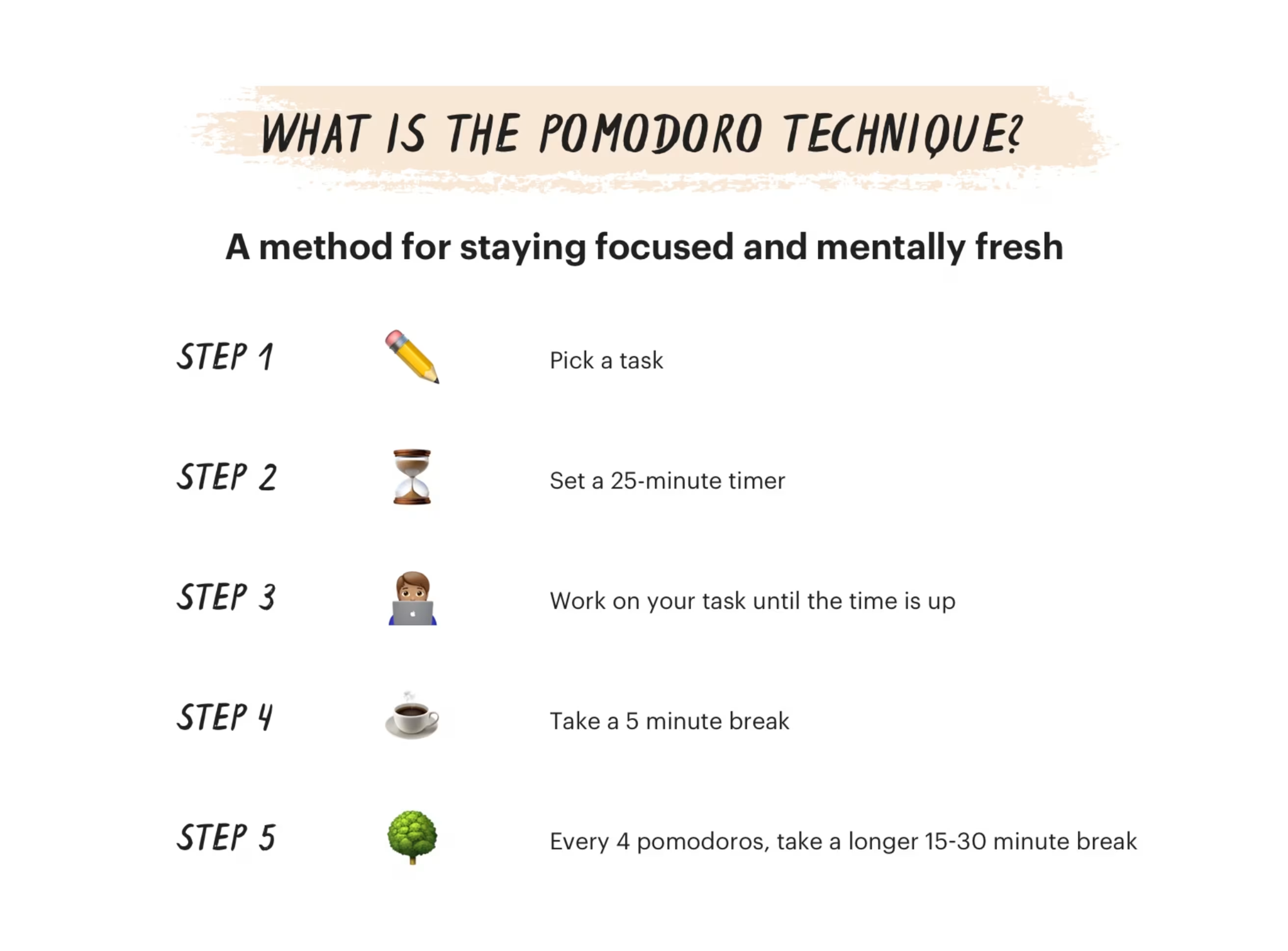
Benefits: Helps overcome procrastination, improve focus, and avoid burnout.
How it works with ABCDE: Pick the first task on your list, set a 25-minute timer, and focus on tackling it. When the timer goes off, take a 5-minute break. After completing four focused sessions, take a 15-minute break. Then, repeat the cycle.
Calendar Blocking:
What it is: Blocking specific times in your calendar for specific tasks or activities.
Benefits: Gives you more control of your day and ensures high-priority tasks get the focused attention they deserve.
How it works with ABCDE: Schedule dedicated time slots in your calendar for completing your A and B tasks.
Related: Best time blocking apps.
Or, you can combine the four methods:
- Prioritize tasks using the ABCDE method.
- Assign estimated times to each task.
- Break down long, time-demanding tasks into 25-minute subtasks.
- Block times in your calendar for tasks and subtasks.
- Pick the first task, start a timer, and begin working on it.
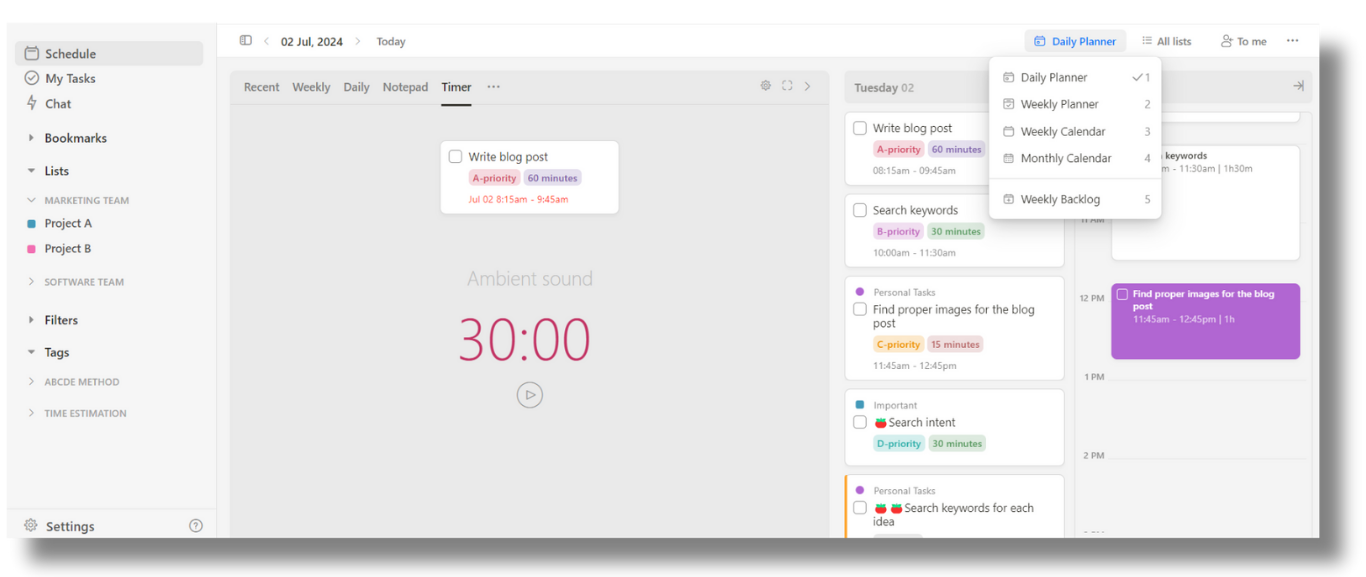
Upbase offers all the necessary tools in a clean, user-friendly interface to help you best use the ABCDE method. As a bonus, you can use all these features (and many more) for free.

Sign up now and test it yourself!
FAQs
1. What is the ABCDE method of productivity?
The ABCDE method is a simple yet powerful priority-setting technique that categorizes tasks into five groups (A, B, C, D, and E) based on their importance and urgency:
|
Task Type |
Important & Urgency Level |
Action To Take |
|---|---|---|
|
A tasks |
High importance & urgency |
Do first |
|
B tasks |
Medium importance & urgency |
Schedule to do after A tasks |
|
C tasks |
Low importance & high urgency |
Do after A and B tasks if time permits |
|
D tasks |
Low importance & urgency |
Delegate |
|
E tasks |
Low-value activities that can be removed from your list |
Eliminate |
3. Is the ABCDE method effective?
Yes, it is. The success of the ABCDE technique lies in its simplicity and action-oriented approach.
By prioritizing tasks based on their importance and urgency, it helps you focus your energy on high-priority tasks and makes you feel more competent in your abilities.
4. How do you use the ABCDE method?
Here are five steps to use the ABCDE method effectively:
- Create your task list
- Set priorities to tasks by A, B, C, D, E
- Tackle highest-priority tasks first (A’s), then move to B’s and C’s if time permits
- Delegate D’s and eliminate E’s
- Review regularly
Explore more about this topic:
